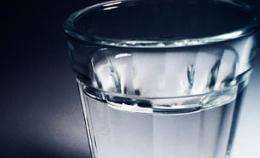Photo: Thiago Felipe Festa.
Manganese is a chemical element naturally found in water, which can lead to various health, behavioral and intellectual development problems in children, according to a study by Maryse Bouchard published in the latest issue of Environmental Health Perspectives.
“We absorb manganese with our food and our bodies regulate its level,” says Bouchard, a professor at the Université de Montréal Department of Environmental and Occupational Health and researcher at the CHU Sainte-Justine. “In strong doses it becomes a neurotoxin causing problems similar to those associated with Parkinson’s: motor fluctuations, memory loss, anxiety and hostility.”
Bouchard conducted the first study on children while addressing acceptable levels of manganese. Her sample was made up of 362 children, age 6 to 13, from various municipalities that have varying levels of manganese in the water. The highest levels found were 260 micrograms per liter, which is below the 400 micrograms threshold set by the World Health Organization and the 300 set by the US government.
Bouchard then proceeded to test the children’s IQ, motor skills, impulsivity, dexterity and memory skills. The results were clear: the more children are exposed to manganese the more they have problems with motor skills and with their short and long term memory. In addition, those exposed to the higher levels of manganese have a non-verbal IQ that is on average 6.6 points lower.
“That’s enormous!” says Bouchard when you consider that mercury affects IQ by only 0.3 points. The study also took into consideration the income and education of the parents as well as the IQ of the mother, but these variables had no significant impact on the results.
In Canada, 20 to 30 percent of the population gets its drinkable water from underground sources but no laws limit the levels of manganese in the water. “Our results highlight a direct correlation as soon as manganese is detectable in the water,” says Bouchard. “If we evaluate that a 5 point loss in IQ is acceptable than we’ll have to set levels at 140 micrograms per liter. In the United States, 8 percent of private wells and 11 percent of public waterworks surpass that threshold. No data exists for Canada.”
Provided by University of Montreal





















